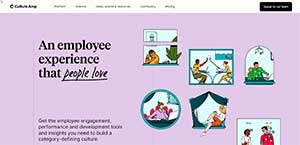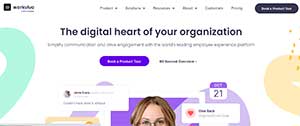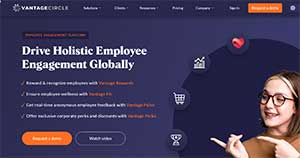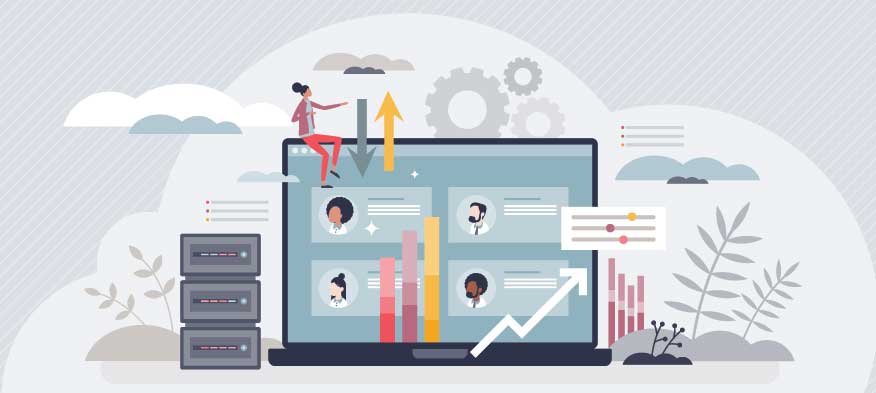In the dynamic world of HR technology, staying ahead means not just keeping pace with the latest tools but understanding the transformative impact of these tools on the broader organizational landscape. Among the many innovations, one stands out for its holistic approach to the employee journey: Employee Experience Platforms (EXPs). Designed to provide a seamless, intuitive experience for employees, from onboarding to offboarding, EXPs are rapidly becoming an indispensable tool for HR professionals.
What Are Employee Experience Platforms?
At their core, Employee Experience Platforms are centralized hubs that aggregate various HR technologies. They streamline multiple HR processes into a unified interface, eliminating the need to juggle different software solutions. Whether it’s recruitment, training, performance management, or even benefits administration, EXPs are a one-stop shop, enhancing the HR team’s efficiency and the overall employee experience.
The Growing Importance of Employee Experience
Before delving into the specifics of EXPs, it’s crucial to understand the significance of the employee experience in today’s workplace. The modern workforce, driven by millennial and Gen Z professionals, values experiences and workplace culture as much as, if not more than, compensation. A positive employee experience drives engagement and productivity and plays a pivotal role in talent attraction and retention.
By providing a consistent, user-friendly interface and experience, EXPs help organizations project a modern, employee-first image. This can be a decisive factor in a competitive job market where prospective employees evaluate potential employers based on their technology stack and commitment to providing a seamless work environment.
Key Features of Employee Experience Platforms
- Unified Dashboard: One of the standout features of EXPs is the centralized dashboard. HR professionals can quickly access any tool or data point they need, while employees can manage their profiles, access training modules, or even request leave, all from the same interface.
- Onboarding and Offboarding Workflows: Streamlined onboarding processes ensure new hires can hit the ground running with all necessary resources, training, and documentation readily accessible. Conversely, a smooth offboarding process ensures knowledge transfer and compliance when employees leave.
- Continuous Learning Modules: Modern EXPs often integrate Learning Management Systems (LMS), offering employees the resources to upskill and reskill. This drives personal growth and ensures the organization’s workforce remains agile and future-ready.
- Feedback Mechanisms: Regular feedback is crucial for continuous improvement. EXPs often use tools that facilitate regular check-ins, pulse surveys, and 360-degree feedback.
- Performance and Goal Tracking: By integrating performance management tools, EXPs allow employees and managers to set, track, and review goals, ensuring alignment with organizational objectives.
- Integration Capabilities: A significant strength of EXPs is their ability to integrate with other enterprise tools, be it communication platforms like Slack or Microsoft Teams or CRM and ERP systems.
The Advantage for HR Professionals
For HR teams questioning whether they need HR technology, the advantages of adopting an Employee Experience Platform are manifold:
- Efficiency: HR teams can drastically reduce administrative overheads by centralizing tools, freeing time for more strategic initiatives.
- Data-Driven Decisions: With all data housed in a single platform, HR professionals can gain deeper insights into employee behavior, performance, and needs, enabling more informed decision-making.
- Enhanced Employee Engagement: A user-friendly platform, by its very nature, encourages more frequent and meaningful employee interactions, fostering a more connected and engaged workforce.
- Consistent Experience: Regardless of the employee’s stage in the lifecycle, whether a new hire or a departing veteran, the experience remains consistent, reinforcing the organization’s brand and values at every step.
Making the Right Choice
When it comes to purchasing or subscribing to an Employee Experience Platform (EXP), it’s crucial to do thorough research and assessment. EXPs are software platforms designed to enhance the overall employee experience in an organization by facilitating various aspects such as communication, recognition, feedback, and more. Let’s delve into the importance of reviewing features and specifications and seeing demos first before investing in an EXP:
Review Features: Each platform offers different features tailored to meet the unique requirements of various businesses. By reviewing the features beforehand, companies can ensure that the platform aligns well with their needs.
- Communication Tools: Does the platform offer real-time messaging, forums, or announcement channels?
- Feedback Mechanisms: How easy is it for employees to provide feedback? Is there an anonymous option?
- Recognition & Rewards: Can employees recognize each other for their efforts? Are there tangible rewards?
- Integration Capabilities: Does the platform integrate seamlessly with your organization’s other tools?
Examine Specifications: Specifications dive deeper into the technical aspects and the fine details of the platform.
- Data Security: How does the platform protect the data of your employees? Is it compliant with necessary regulations?
- Customizability: Can the interface or features be tailored to align with your company’s branding and culture?
- Scalability: Can the platform support your company’s growth in terms of number of users or added features?
See Demos and Trials: It’s one thing to read about features and another to see them in action. Demos or trials offer firsthand experience.
- Functionality: How intuitive is the platform? Is the user interface user-friendly?
- Performance: Does it load quickly? Are there any technical glitches?
- Support: How responsive is the platform’s support team during the trial? This can give insight into what to expect post-purchase.
Examples of EXPs and What to Look For:
Culture Amp: Primarily centered on feedback, you’d want to explore how it facilitates employee surveys, feedback loops, and data analytics to gain insights into employee satisfaction.

Workvivo: This platform emphasizes employee engagement and communication. Evaluate how it integrates with existing communication tools and promotes inter-departmental collaboration.

Vantage Circle: With a focus on rewards and recognition, you’d want to assess how easily it allows managers and peers to recognize achievements and how it aligns with your organization’s reward structure.

Lattice: Primarily a performance management platform, it provides employee engagement and growth tools.

Early Adoption OF HR Technology Benefits HR Departments
In an age where the employee experience can make or break an organization’s reputation, adopting tools that prioritize this aspect is a strategic imperative. Employee Experience Platforms, with their holistic approach, provide HR professionals with the perfect blend of efficiency, data, and user-friendliness, making them a worthy investment for any forward-thinking organization. As the modern workplace continues to evolve, the role of HR technology and EXPs is set to grow, making now the ideal time for HR professionals to familiarize themselves with and adopt this revolutionary technology.




